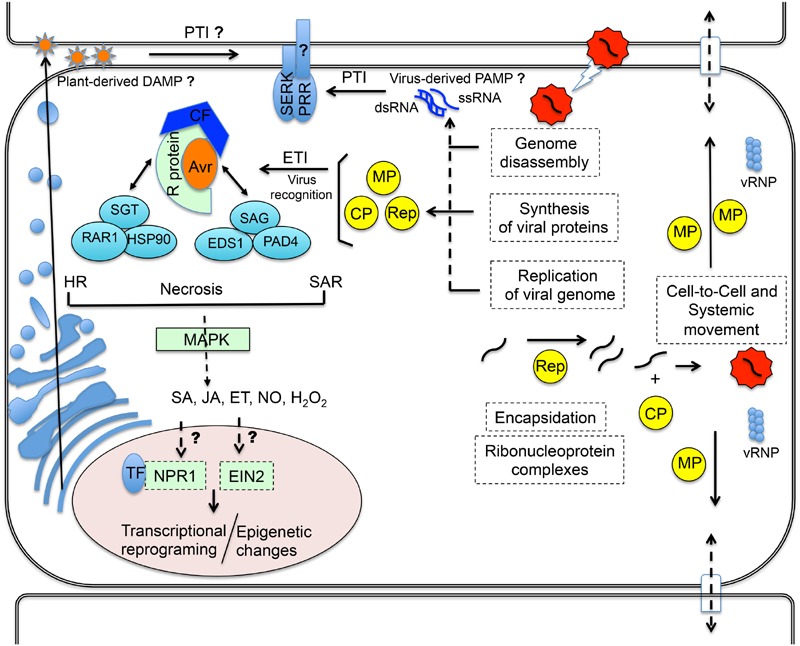FIGURE 1.

Antiviral innate immunity with conserved features with antibacterial and antifungal immune responses. Plant viruses are obligate, biographic parasites and as such their life cycles start with the penetration of the virions in the host cells via wound sites (lightening arrow). Within the host cells, the virion is disassembled and then host cells mediate the expression of the viral genome by providing a translation apparatus for all viruses and transcription machinery for DNA viruses (Figure 2). The viral mRNAs are translated into the cytoplasm, producing at least three viral proteins absolutely required for completion of the viral life cycle, replication protein (Rep), movement protein (MP) and coat protein (CP). The viral replication proteins combine with cellular proteins to produce multiple copies of the virus genome. These newly made genomes interact with CPs to form new virions or viral ribonucleoprotein complexes (vRNP). The next step is movement of the virus into neighboring cells, which requires the MP. The intracellular translated viral proteins (Avr) may also provide recognition sites for cytosolic NB-LRR receptors (e.g., R proteins), triggering ETI, which results in HR, necrosis or SAR similarly to non-viral ETI. R proteins, R co-factors (CF) and Avr factors form an interacting complex with the SGT1/RAR1/HSP90, and EDS1/PAD4/SAG101 modules to mediate downstream changes in SA, JA, ET, NO and H2O2 levels or signaling via MAP Kinases cascades, culminating in the induction of defense genes. NPR1 complexes TF to induce defense genes via SA signaling, whereas EIN2 is a regulator of ET signaling. Virus infection may also trigger epigenetic changes. At the first line of defense, replication of viral RNA genomes may provide non-self RNA motifs (ssRNA or dsRNA) as virus-derived PAMPs to activate PTI. Alternatively, plant cells may sense viral infection and secrete plant-derived DAMPs, recognized by PRRs extracellularly. Members of the SERK family also function as co-receptors in viral PTI. Arrows denote unknown or putative paradigms in viral innate immunity. Adapted from Mandadi and Scholthof (2013).
